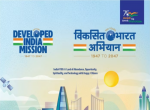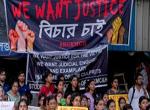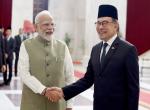The Constitution of India, whose framers deserve great credit for the manner in which they have prescribed the duties of the State and laid down Directive Principles of how the State shall conduct itself, states in Article 47, “Duty of the State to raise the level of the nutrition and the standard of living and improve public health care. The State shall regard the raising of the level of nutrition and standard of living of its people and the improvement of public health as among its primary duties…” Just as Article 38 directs the States to secure a social order for the promotion of the welfare of the people, Article 47 makes ‘public health’ the primary duty of the State. In this behalf it has to be noted that the pre-independent government of India, which was administered by the British and the provincial governments had provided an elaborate network of rural dispensaries and health centres, district hospitals and medical colleges and their attached hospitals to provide health care to all Indians. One of the primary duties of the civil surgeon of every district was to ensure prevention and control of epidemics and the provision of universal immunisation against diseases such as small pox. The government health care system was supplemented by dispensaries, health care centres and hospitals run by local bodies, including the district boards and municipalities. Large city corporations such as those of Bombay, Calcutta and Madras even ran major referral hospitals and medical colleges. There were some private health care centres, but by and large it was a system very much in the public domain and the State did not shirk its duty to look after the health of the citizens. Princely India also more or less followed suit.
Let me reinforce my above statement by reference to the district gazetteers of two districts, now in Pakistan and one Princely State, Gondal in Gujarat. The district gazetteer of Montgomery District is of the period 1883-84. At that time Montgomery had a district hospital under the Civil Surgeon and dispensaries (primary health centres in today’s parlance) at Kamalia, Dipalpur, Gurgera and Pak Pattan. In 1930 in Attock District there was a district hospital at Campbellpur, the district headquarters and civil hospitals at Fatehganj and the Jand, apart from mobile dispensaries which toured the district. There was also a jail hospital and a railway hospital at Campbellpur. The District Board ran civil hospitals at Tallagang, Tamman, Ahdawal, Hassan Abdal and Domel, all tehsil headquarters, apart from seventeen rural dispensaries. To this six more were added in 1930, making a total of one district hospital, six tehsil level hospitals and twenty-three rural dispensaries. Besides this, the municipalities ran a women’s hospital and a general hospital at Hazro and a dispensary at Pindigheb, a Sub Divisional town in the district. Moving to Gondal State, we find that as early as 1906 the State hospital at Gondal, the capital of the State was upgraded to a high standard of medical and surgical care and it also became a training centre for nurses and midwives. Besides this a district level hospital was constructed at Dhoraji and smaller hospitals at Upleta, Bhayavadar, Sarsai and Jetalsar. In addition four charitable hospitals opened in the private sector. There was universal vaccination against small pox and very effective control over bubonic plague, influenza and other epidemic diseases which devastated large parts of Kathiawar and the Bombay Presidency. It is obvious that the British and the Princely States took their duty to provide health care coverage very seriously.
When independence came government took a conscious decision to vastly expand the public health care system and to give it multiple dimensions in terms of prevention of disease, control over epidemics, and provision of primary health care down to the last village and expansion of medical education in the public domain, together with world class medical facilities. In this context the medical colleges inherited from the British were strengthened and enlarged and State Governments set up new medical colleges. For example, even in a State as backward as Madhya Pradesh high quality medical colleges were set up at Bhopal, Indore, Gwalior, Jabalpur and Rewa, each with a thousand bedded hospital. The Central Government set up the All India Institute of Medical Sciences at Delhi and such top quality institutions as the Postgraduate Institute of Medical Research and Education, Chandigarh and the Jawaharlal Nehru Institute of Post Graduate Medical Education and Research, Pondicherry. The Government of India made available generous grants to medical colleges and medical educational institutions, thus substantially strengthening the health care system in India. Even today, with a large number of high quality health care institutions in the private sector, the All India Institute of Medical Sciences, Delhi has consistently been considered the best medical institution in the whole of India. So much so that Government of India has decided to set up five more All India Institutes of Medical Sciences, of which one is located in Bhopal and has just begun functioning. There are also super specialty hospitals, such as the Bhopal Memorial Hospital for the Bhopal gas victims, VIMHANS, that is, Vivekananda Institute of Mental Health and Neurological Science for neurological and psychological disorders, the specialist institute in Dehradun for the visually handicapped, Tata Cancer Hospital, Bombay and many others.
In a country as large as India in every field of endeavour there is always room for more and, therefore, in the private sector also specialist health care institutions sprang up. Escorts and Apollo for cardiac care, the Shankar Netralaya for eye disorders and Jaslok Hospital and Breach Candy Hospital in Bombay are early examples of private sector initiative in high quality health care. We already had a long tradition of private sector clinics and poly clinics on a small scale, to which in recent years has been added a whole range of diagnostic centres. All the hospitals, etc., in the private sector are institutes for making profit and the old tradition of business houses running charitable hospitals seems to have died down. The entry of the private sector into health care was initially welcomed by government, but without diluting government’s own predominant role across the board of providing health care to people at large. Notwithstanding the large number of private medical institutions which have come up in recent years, government hospitals are still considered to have a certain uniform standard of medical practices and, therefore, they have been the most popular medical institutions in the country. Even today CGHS institutions have the largest clientele because they are government run and the government servants still find that CGHS dispensaries and hospitals provide them the best health care. This is true of ESIC hospitals and dispensaries also in the field of industrial workers.
The Directorate of Health Services of every State is responsible for running hospitals in the public domain. Gradually the professional heads of the Directorate have been replaced by IAS officers designated as Commissioner for Health. The powers of the Directorate and Civil Surgeon/Chief Medical Health and Officers of the districts have been curtailed and centralised, with the result that there is a distinct drop in the professional competence and efficiency of government medical institutions. It is almost as if government does not want its own institutions to function effectively. Over the years recruitment to the medical service in the States has been deliberately kept restricted, with the result that there is no entry of fresh blood into a district level medical institution. This has created a shortage of doctors even at district level, where the district hospitals are the referral centres for our primary health centres. On paper for a cluster of villages with a total population of thirty thousand (twenty thousand in tribal areas) there is a full-fledged primary health centre and for every three thousand population (two thousand in tribal areas) there is a subsidiary health centre. Most primary health centres and subsidiary health centres have either no staff or are undermanned. In the district level hospitals there are no young doctors who can be trained for taking on higher responsibility and this is affecting their efficiency. There is equipment shortage, inadequate supply of drugs, inadequate maintenance of infrastructure and very little expansion of capacity and generally speaking there is an environment in which patients lose confidence in the ability of these hospitals to provide proper treatment. Diagnostic facilities are obsolete and very often out of repair. Many doctors in the government hospitals prescribe tests and refer the patient to private diagnostic centres which charge high fees, part of which would be shared with the referring doctor. This, in turn, pushes patients away from government hospitals and into the hands of private medical centres whose fees an average person can hardly afford. Ultimately the government hospitals are left only with hopeless cases which private hospitals will not touch and indigent patients come to government hospitals as a last resort because they cannot really afford even moderately expensive health care and treatment. One senses in this a deliberate conspiracy of government to reduce public sector health care to a level where the system dies an unnatural death, to the great benefit and advantage of the private sector. The rich in any case would go to private hospitals, which earn enormous profits. The poor either go to an unsatisfactory public health facility or suffer disease stoically and die without medical care. If this is not a negation of what Article 47 enjoins, then what is it?
I have always felt that except in the first two or three Plans our Planning Commission has been distancing itself from the reality of India in favour of an utopian world of its own imagination. Regardless of jugglery of figures the fact remains that India has huge numbers of poor people who barely subsist. Ever since Rajiv Gandhi became Prime Minister, surrounded by his Doon School cronies and their ilk, government entered into a new era of what Rajni Kothari called “The Baba Log Government”. I, as Vice Chairman of the National Commission on Urbanisation, had occasion to closely interact with Rajiv Gandhi when my batch-mate Gopi Arora was his Secretary and Mani Shankar Aiyer was his Joint Secretary. Gopi was level headed and had a more realistic view of India. Gopi was a minority of one in that crowd and the impression created was that India is a country of the middle class, who formed a huge group of a hundred million consumers. I remember that in one meeting I told Rajiv that if out of a population of eight hundred millions a hundred millions were consumers, it still meant that seven hundred million people had nothing with which to consume. That meant that seven out of eight persons in India existed only on the margin, whereas the government seemed to think that only the sole exception amongst the eight was a worthwhile Indian. A government whose thinking is along these lines can never understand the problems of the poor and regardless of whatever such a government says, it can never be pro poor. I am sure these people secretly must have thought that if one could only be rid of the seven hundred million non consumers India would be one of wealthiest countries in the world.
The Planning Commission is in the process of finalising its chapter on health for the Twelfth Five Year Plan document. If what the Planning Commission proposes is accepted India would be amongst the ten bottommost countries in terms of percentage of GDP spent on health care. The new Plan document talks in terms of - “Preventive interventions which the government would be both funding and universally providing clinical services at different levels, defined in an Essential Health Package, which the government would finance but not necessarily directly provide”. In other words, government would downgrade its own direct provision of health services and would increasingly fund and encourage the corporate sector. The document further states, “Each citizen family would be entitled to an Essential Health Package in the network of their choice. Besides public facility networks, organised private and NGO providers would also be empanelled to give a choice to the families”.
The above statement presumes that there will be an equitable distribution of health services throughout the country by the private sector. Because the private sector functions only on the basis of profit, the system is bound to degenerate into one similar to the civil aviation sector, that is, the lucrative profit making routes would largely be diverted to the private sector and loss making routes would be serviced by Air India, which would be beggared as a consequence, then held up as an example of the inefficiency of the public sector and ultimately be forced to close. The Planning Commission also presumes that every Indians understands the niceties of an Essential Health Package which, it is presumed, would be operated through a system of health insurance. Whether the Planning Commission likes it or not more than seventy-two percent of the people of India live in villages with poor connectivity and another ten percent of small town population lives in semi rural conditions with equally poor connectivity. Does the Planning Commission seriously expect these people to understand what an Essential Health Package is, identify the service providers in the corporate sector and then exercise a preference regarding the health package? So many people are on the verge of starvation that their only thought is on how to procure the next meal. They do not have the ability, the time or the knowledge to be able to choose between health packages. They can go to a primary health centre and obtain medicines, but they cannot fill up insurance forms and then try and get reimbursement of expenses incurred by them in obtaining medical care. Why villagers alone, talk to any middle class, educated citizen and hear his woes in trying to get payment from insurance companies.
Montek Singh Ahluwalia, the Members of the Commission and its officers are all beautifully serviced by CGHS. They have no idea of how the medical insurance system works in India. Till recently I was Chairman of the Board of Governors of the Atal Bihari Vajpayee Indian Institute of Information Technology and Management, Gwalior, one of the four highly specialised institutions set up by government to promote information technology in India. We decided to provide medical insurance to all our faculty and staff. We ran into such hurdles that we eventually abandoned the scheme and instead opted for full reimbursement by the Institute of any medical costs incurred by the faculty and staff. If this could happen to a high level institute of technology can the Planning Commission even envisage the problems which a villager would have in accessing what the Commission calls an Essential Health Package? Let me give another example. Many States have opted for insurance coverage against crop failure. Obviously the scheme is not working because in many areas, especially Maharashtra, failed farmers commit suicide. In sharp contrast is the scheme of many States to assess crop damage during a natural calamity or major seasonal vagaries which damage crops. The system is that the Collector asks the Tehsil authorities to assess crop conditions and by random ‘annawari’ each Patwari assesses damage to a particular crop in his Patwari Halka. For example, in the winter of 2011-12 there was some ground frost in parts of Madhya Pradesh and some crops, especially gram, suffered damage. My wife has a farm twenty-three kilometers away from Bhopal. She had not applied for compensation but nevertheless the Patwari included the farm in his assessment and must have given a report on his observations. One fine day, my wife received a cheque for rupees eighteen thousand from the Tehsildar by way of compensation for the damaged crop. Every other farmers in the village also received similar compensation, despite the fact that claims had not been filed. I cannot think of any insurance system which the geniuses of the Planning Commission may devise which will provide the kind of quick relief to farmers that Raja Todar Mal’s revenue administration system provides even today in India, corruption and leakages notwithstanding. Even today, there are many areas in which time tested systems in the public sector are more efficient than the private sector and governance in general and health care in particular are a part of them.
The only countries where there is satisfactory universal health care are those in which the equivalent of the national health scheme operates. Much of Europe and the United Kingdom have universal health care provided by the State. The system undergoes fine-tuning from time to time, but the underlying principle always is that it is the duty of the State to take care of the health of all its citizens. The United States, by far the most affluent country in the world, has a poor health care system despite having some of the best hospitals in the world. That is why President Obama had to virtually stake everything in order to widen the scope of medical insurance so that health coverage could be provided to the very poor. This system still does not measure up to the national health service of Britain but it is an improvement on the past. Capitalist United States has begun to take notice of the poor, Socialist India has a Planning Commission which wants to destroy the last vestige of public health coverage because of the peculiar notion of its Deputy Chairman that private is better than public, the rich include the poor and, in any case, the poor can always eat cake. India can survive militancy, terrorism, separatism, Naxalism, Jehad, even violent attacks by extremist Pakistani groups. I am, however, beginning to have serious doubts whether India can survive its own Planning Commission.
Published Date: 16th August 2012









Post new comment